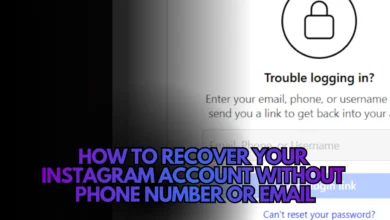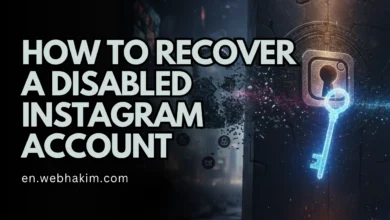The Best Time to Post on Instagram Explore

Timing on Instagram is more than luck, it’s algorithmic strategy.
When you post during high-activity hours, your content receives more engagement in the first 30 minutes , a key signal for the algorithm to boost your visibility on the Explore Page.
Fact: Posts that reach Explore can get up to 10× higher engagement than regular ones.
In this comprehensive guide, we’ll uncover:
- How the Instagram algorithm works for Explore,
- The best times to post (by day and region),
- Data-backed timing strategies,
- And psychological triggers to maximize engagement.
1-Understanding the Instagram Explore Algorithm
Before discussing timing, it’s essential to understand how the Explore page algorithm decides what to show. The Instagram Explore algorithm focuses on user behavior, not followers.
It studies what users engage with the type of content, topics, and creators and serves similar posts.
Key factors influencing Explore visibility include:
- Engagement rate: Likes, comments, shares, and saves matter most in the first 1–2 hours.
- Relevance: Whether your content aligns with trending topics or popular formats (Reels, carousels).
- Session activity: Posting when users are actively browsing helps your content appear faster.
- Post freshness: The algorithm favors newer posts over older ones, especially during high-traffic hours.
So, the equation is simple: timing + engagement = visibility on Explore.
Quick Stats
| Metric | Data | Impact |
|---|---|---|
| Most Active Day | Sunday (+28 %) | Highest reach |
| Peak Hour | 8 PM – 9 PM (+35 %) | Explore boost |
| Lowest Activity | 3 AM – 5 AM (–85 %) | Avoid posting |
How the Instagram Algorithm Works (2025 Update)
| Factor | Description | Importance (X) |
|---|---|---|
| Engagement Rate | Likes, saves, shares & comments in first 30 minutes | X-X-X-X |
| Watch Time | How long users stay on your post/Reel | X-X-X-X |
| Relationships | Prior interactions between you & viewer | X-X-X |
| Interest Relevance | Topic matches user’s interests | X-X-X-X |
| Originality Score | Penalizes reposted or watermarked content | X-X-X-X |
Instagram now deprioritizes videos re-uploaded from TikTok or with visible watermarks.
Instagram Explore Checklist 2025
Best Instagram Explore Times 2025
Below are the optimal global time slots for maximum engagement, based on WebHakim’s data analysis and social-media studies.
| Day | Morning (CET) | Noon (CET) | Evening (CET) | Night (CET) |
|---|---|---|---|---|
| Monday | 09 – 10 AM | 12 – 1 PM | 6 – 7 PM | 9 – 10 PM |
| Tuesday | 10 – 11 AM | 12 – 1 PM | 5 – 6 PM | 9 – 10 PM |
| Wednesday | 10 – 11 AM | 12 – 1 PM | 6 – 7 PM | 9 – 10 PM |
| Thursday | 09 – 10 AM | 12 – 1 PM | 5 – 6 PM | 8 – 9 PM |
| Friday | 10 – 11 AM | 1 – 2 PM | 4 – 5 PM | 8 – 9 PM |
| Saturday | 11 – 12 AM | 2 – 3 PM | 5 – 6 PM | 8 – 10 PM |
| Sunday | 11 – 1 PM | 3 – 4 PM | 6 – 7 PM | 8 – 10 PM |
Peak engagement:
- Weekdays → 6 PM – 7 PM
- Weekends → 8 PM – 10 PM
Reels and Stories often perform best between 9 AM and 12 PM, while feed posts and carousels get better traction in the evenings.
Why Posting Times Affect the Explore Algorithm
Instagram’s early engagement window is critical. Within the first 60–90 minutes after posting, the algorithm measures:
- Interaction rate per follower,
- Content retention (how long users watch or view),
- And engagement velocity (speed of interactions).
If engagement spikes fast, Instagram identifies your content as valuable and starts pushing it to Explore and “Suggested Posts.”
So, if you post during hours when your audience is offline, your engagement window closes too early — drastically lowering Explore potential.
The Psychology Behind Posting Times
Understanding why people engage at certain times can make your strategy stronger.
- Morning (7–10 AM): Users check their phones before work or school. Motivational, educational, and visually appealing posts perform best.
- Lunchtime (11 AM–1 PM): People scroll during breaks. Quick Reels and entertaining posts thrive here.
- Evening (6–9 PM): Emotional, lifestyle, or personal content resonates more as users unwind.
- Late Night (after 10 PM): Great for global audiences or niche groups (e.g., gamers, designers).
If your target audience is younger (Gen Z), evening and late-night hours tend to outperform mornings.
How to Find Your Brand’s Best Time
Every account has a unique audience pattern. Here’s how to identify yours:
a. Use Instagram Insights
- Go to your profile → “Insights” → “Audience.”
- Scroll down to see Most Active Times (by hours and days).
- Post 30–60 minutes before the peak time listed.
b. Track Engagement Data
Use tools like:
- Later, Metricool, or Iconosquare for automated timing suggestions.
- Track engagement rates per post time in a simple spreadsheet for 2–3 weeks.
c. Consider Time
Zones If you have an international audience, schedule posts based on your top three audience locations.
For example:
- If 40% of followers are in the U.S. and 30% in Europe, test 3 PM UTC (morning in U.S., afternoon in Europe).
Best Times for Different Content Types
Each content format performs differently depending on user intent.
Reels:
- Best: 12 PM – 3 PM and 6 PM – 9 PM.
- Reason: Users prefer short-form videos during breaks or downtime.
- Tip: Keep your Reels under 15 seconds for optimal retention.
Stories:
- Best: Morning (8–10 AM) and Evening (7–9 PM).
- Reason: Stories are habitual; users check them before and after work.
- Tip: Post multiple Stories spread throughout the day for consistent visibility.
Carousels:
- Best: 11 AM – 2 PM.
- Reason: Audiences spend more time swiping during lunch breaks.
- Tip: Use curiosity-driven first slides (questions, hooks).
Live Sessions:
- Best: Evenings (7–10 PM) or weekends.
- Reason: People have more free time to join and engage.
Mistakes to Avoid When Timing Posts
Even with great timing, small mistakes can cost your visibility:
- Posting too frequently – Flooding feeds decreases reach. Stick to 1–2 high-quality posts per day.
- Ignoring Insights – Global averages may not reflect your real audience.
- Posting at odd hours – Avoid midnight posts unless your audience is international.
- Not interacting – Early engagement also depends on your activity. Replying to comments quickly helps push posts higher.
- Ignoring Reels Trends – Posting outside trending sound windows reduces viral potential.
The Perfect Timing Formula (Practical Strategy)
Here’s a simple 3-step formula to discover your Explore-winning time:
Step 1: Collect Data
Post at different times daily for one week (morning, noon, and evening).
Step 2: Measure Engagement
Record:
- Likes, saves, comments (within 1 hour).
- Reach vs. engagement ratio.
- Explore impressions (visible in Insights).
Step 3: Identify Patterns
Find your top-performing 2–3 time slots, then stick to them consistently for a month. Instagram rewards consistency.
Conclusion: Post Smart, Not Just Often
The key to landing on Instagram Explore is understanding that timing amplifies visibility.
Posting when your audience is most active helps the algorithm recognize your content’s potential faster and that’s what earns you more reach, followers, and conversions.
The best posting times generally fall between 9 AM and 12 PM or 6 PM and 9 PM, but your unique audience data should always guide your strategy.
Test, measure, and adapt continuously. With the right timing, your content won’t just reach your followers it will reach the world.
Frequently Asked Questions (FAQ)
1. What is the best time to post on Instagram Explore in 2025?
Generally, between 9 AM – 12 PM and 6 PM – 9 PM, depending on your audience’s time zone and activity pattern.
2. Do weekends perform better than weekdays?
Yes, engagement rates often peak on Saturdays and Sundays as users spend more leisure time browsing.
3. How quickly does Instagram’s algorithm react to a post?
The first 60–90 minutes after posting are crucial early engagement determines future reach.
4. Should I post Reels and feed posts at the same time?
No, separate them by a few hours to maximize exposure.
5. Can scheduling tools affect reach?
Not negatively as long as they post natively via Instagram API (like Later or Meta Business Suite).



